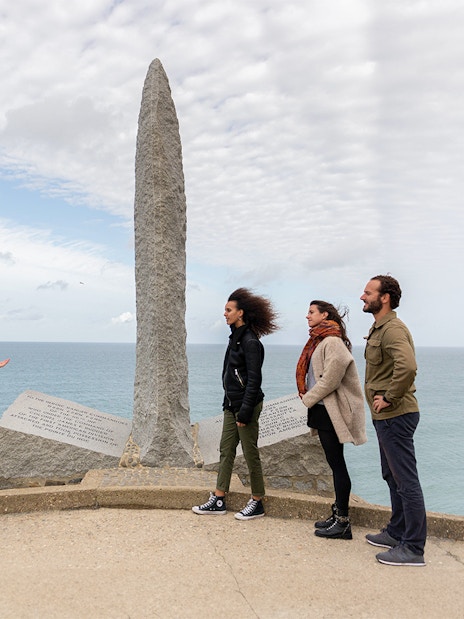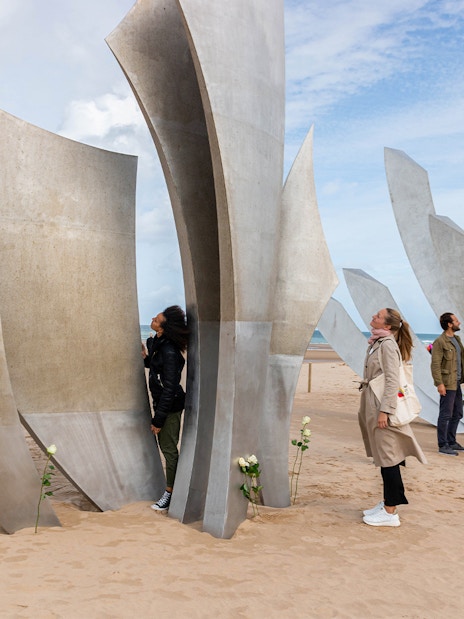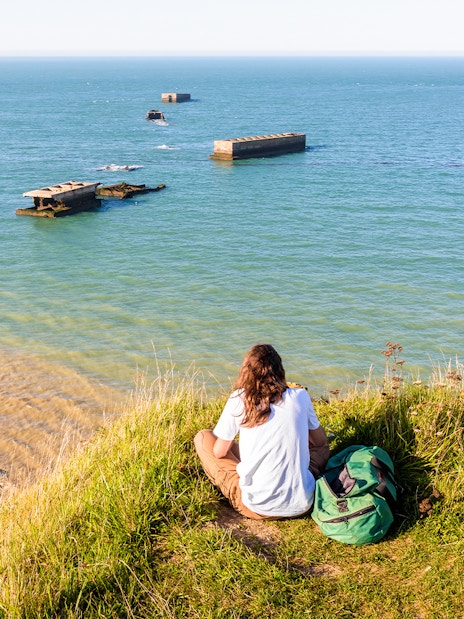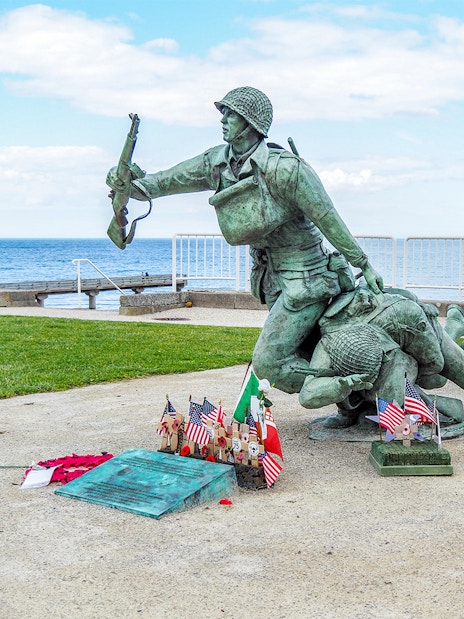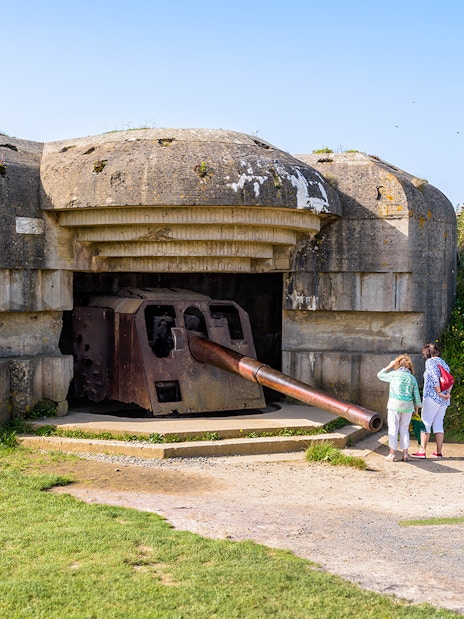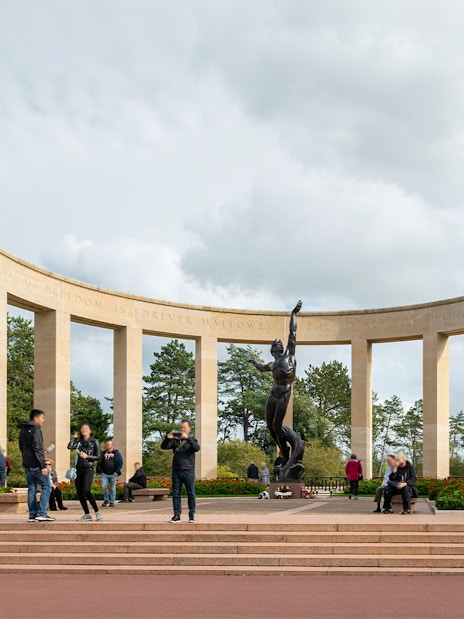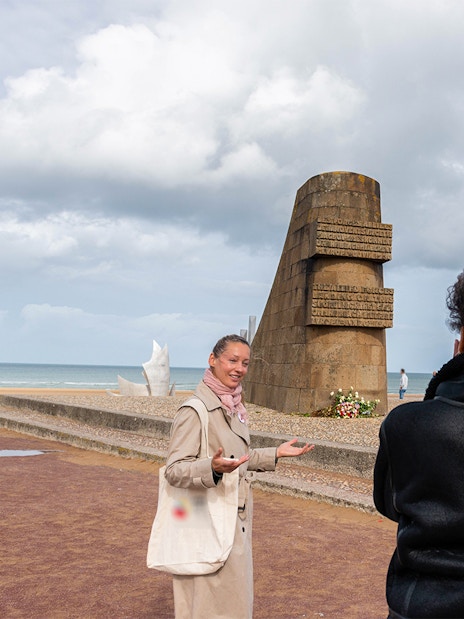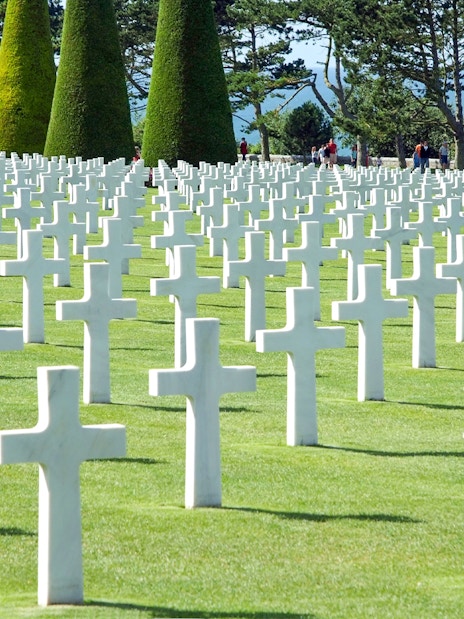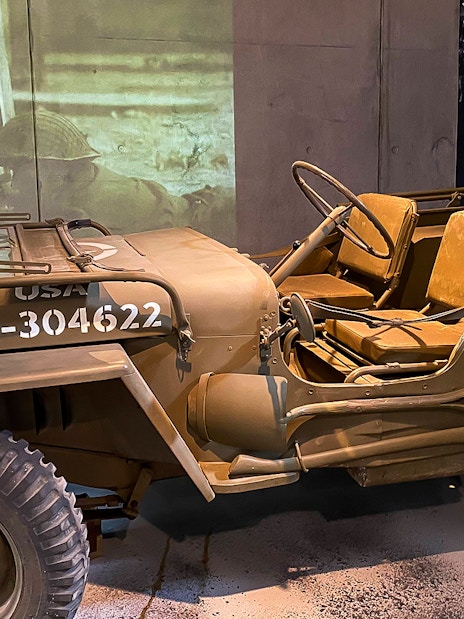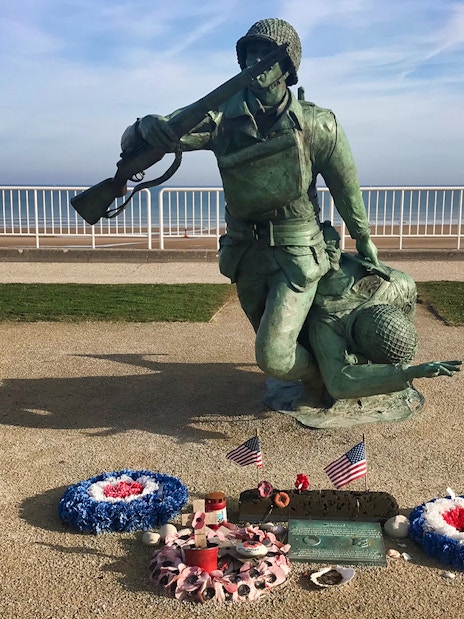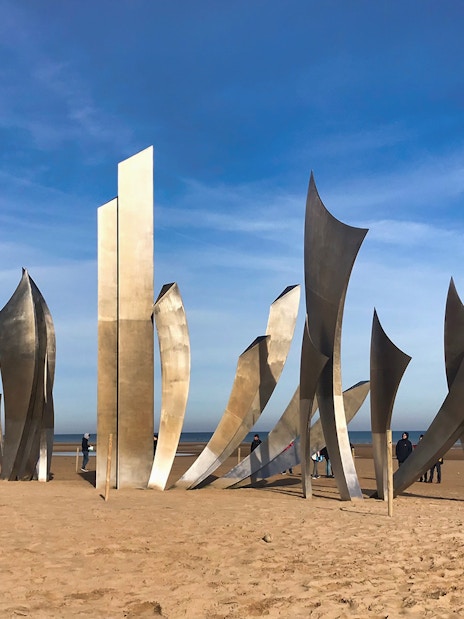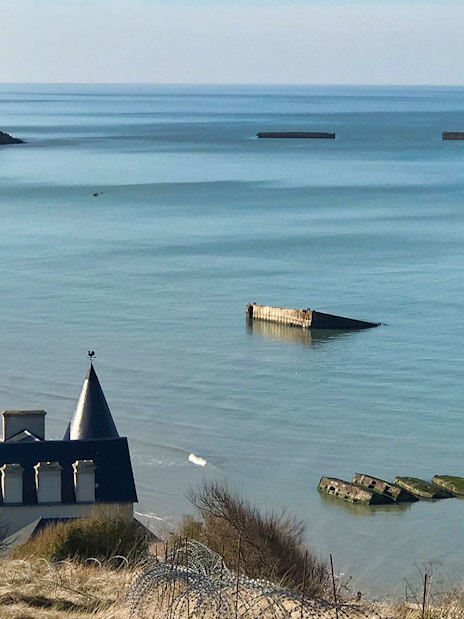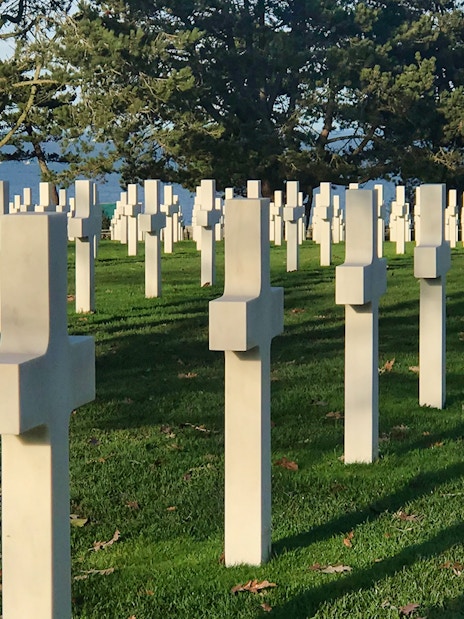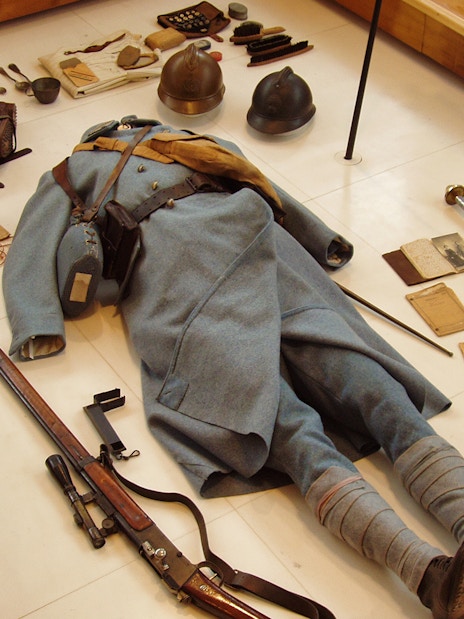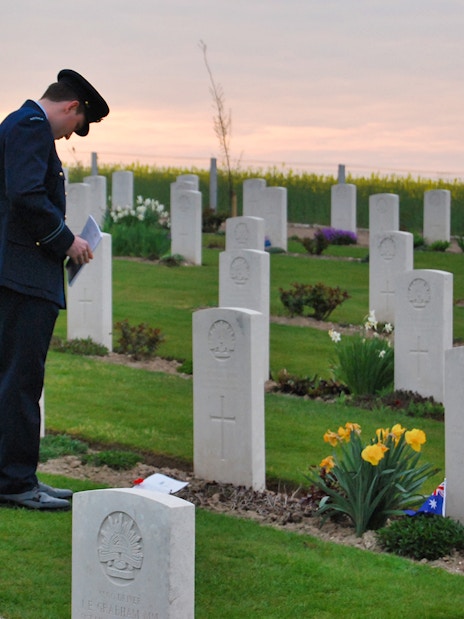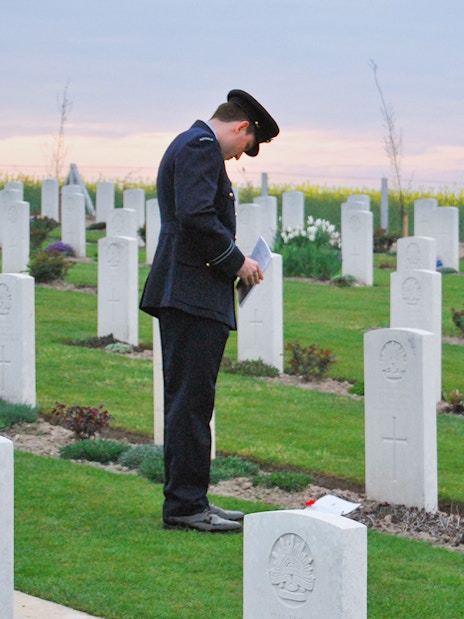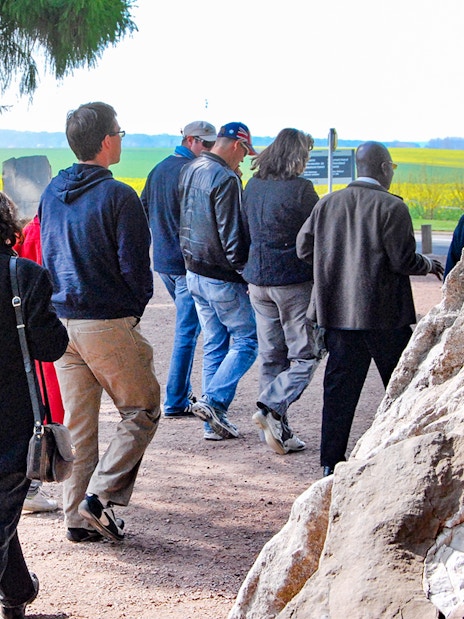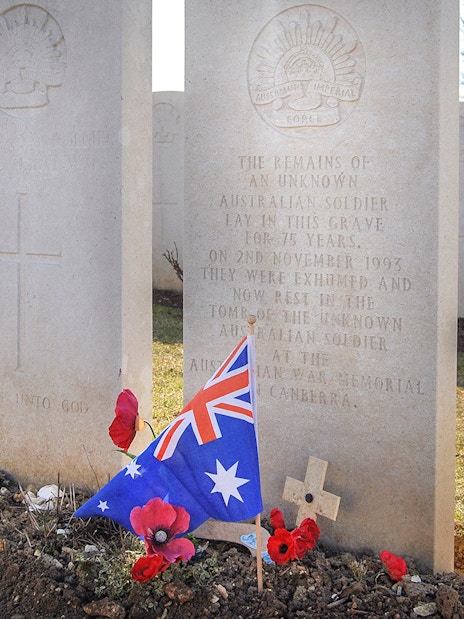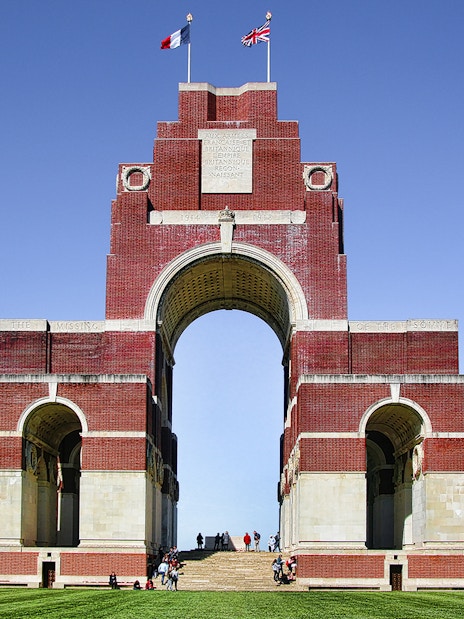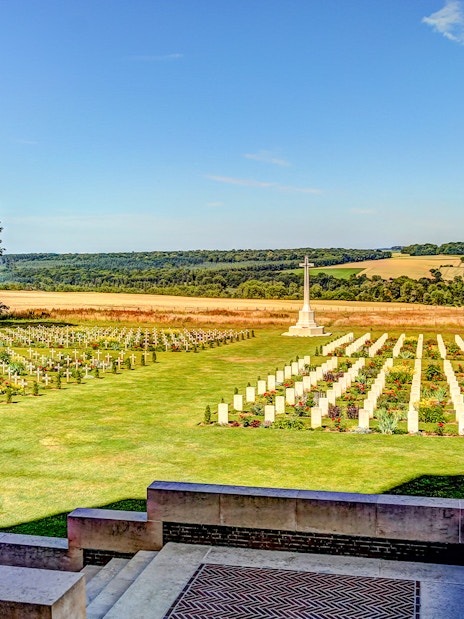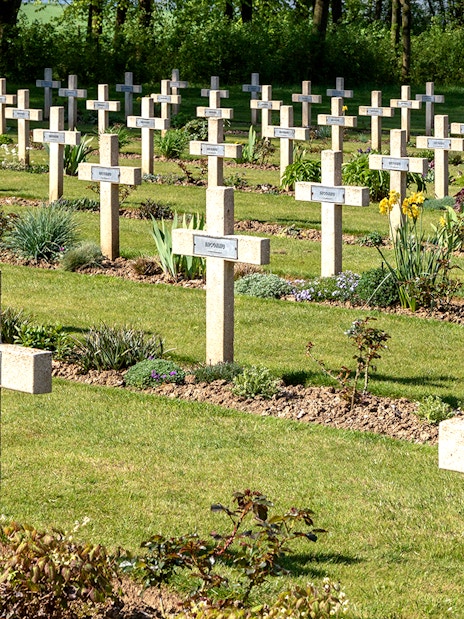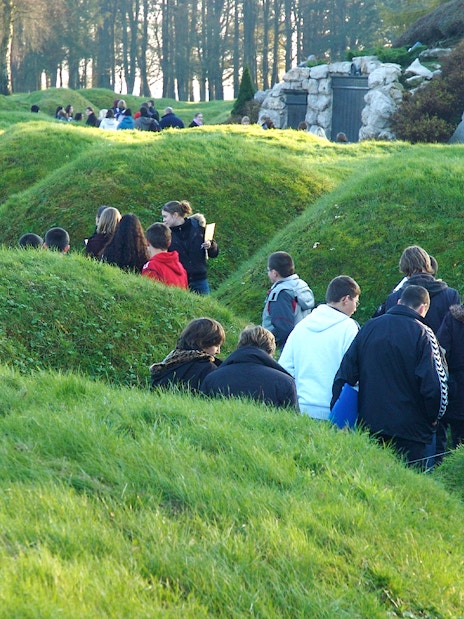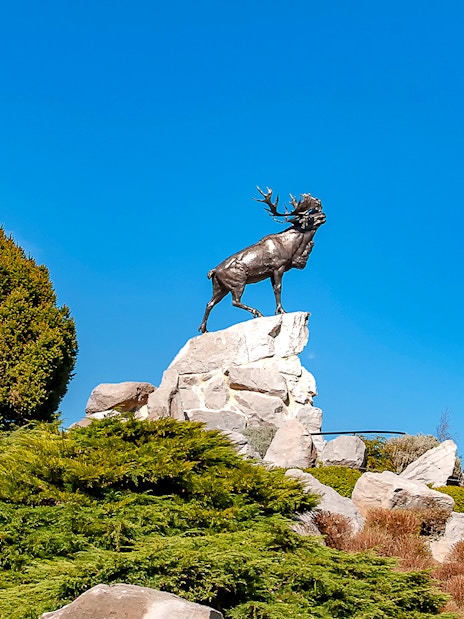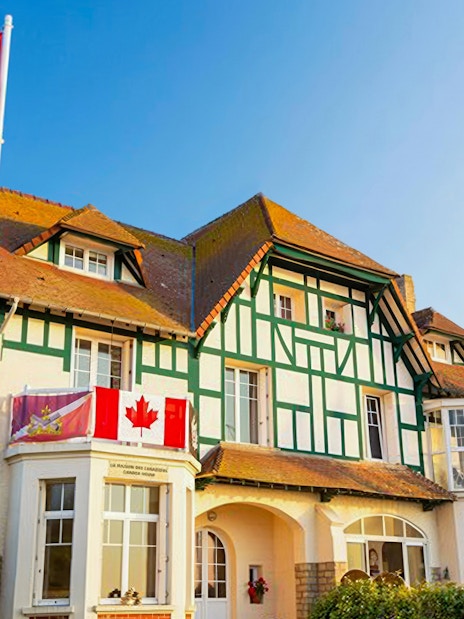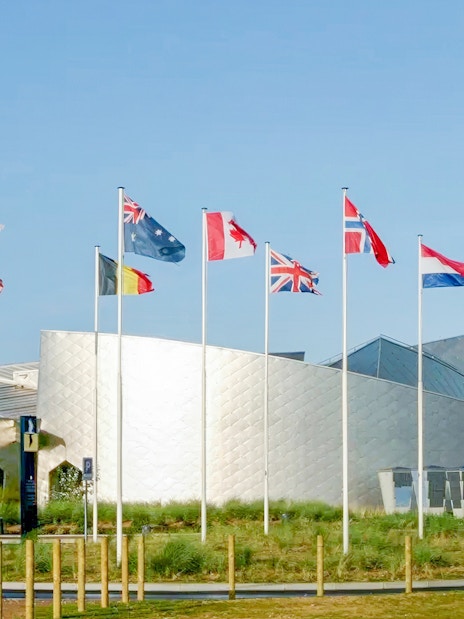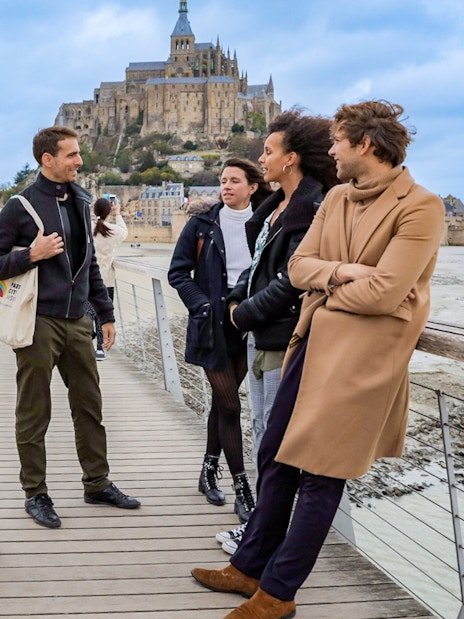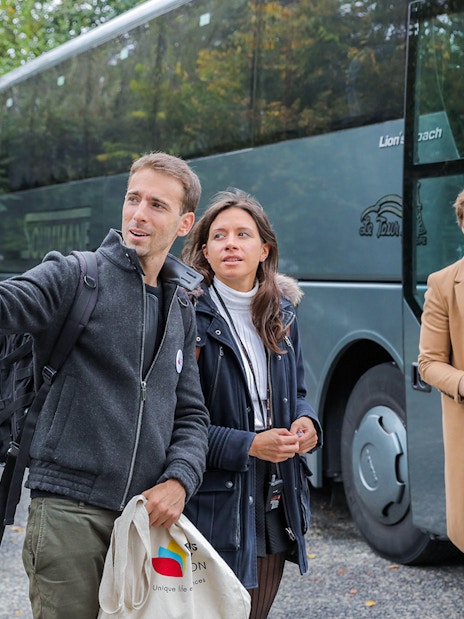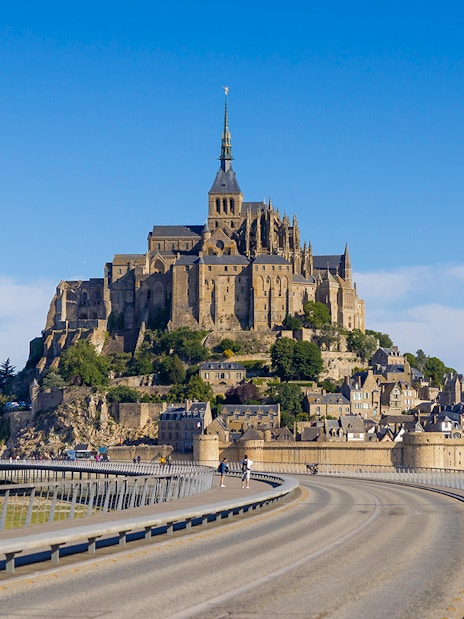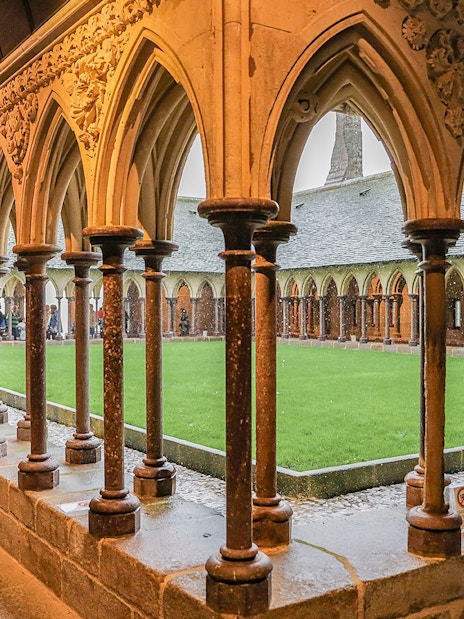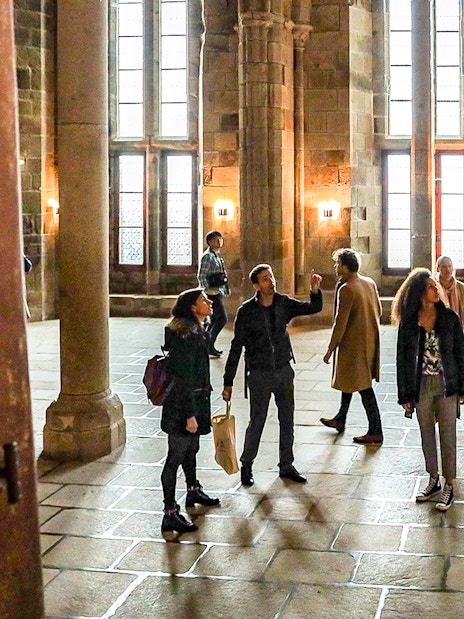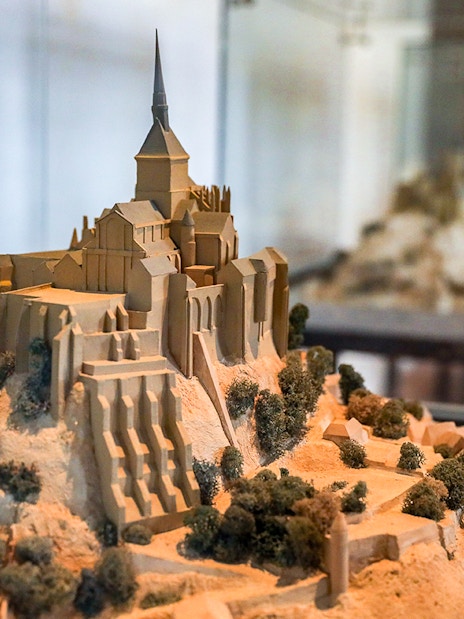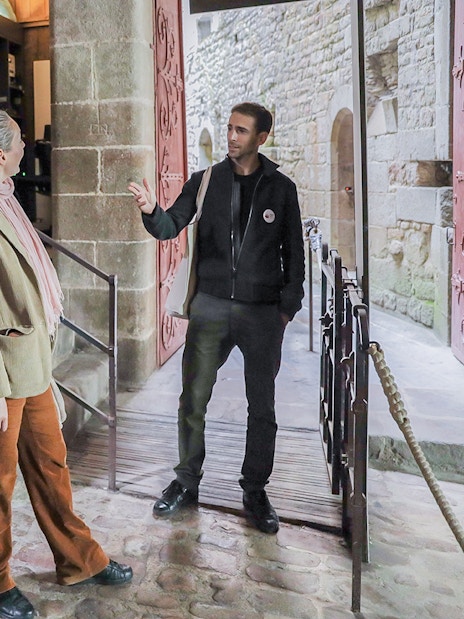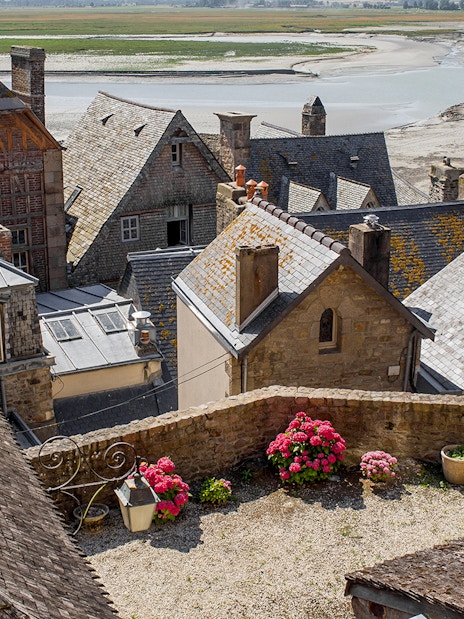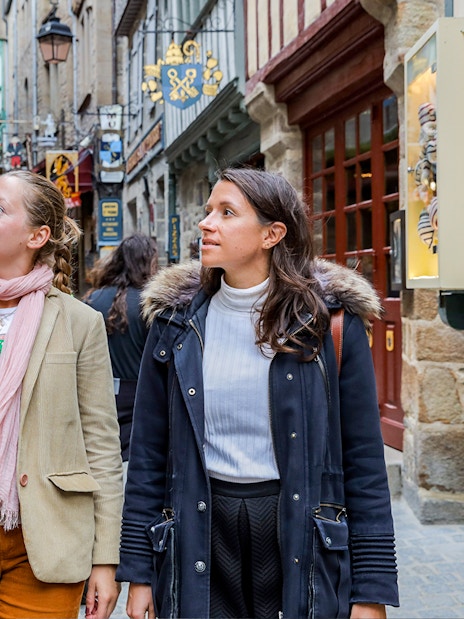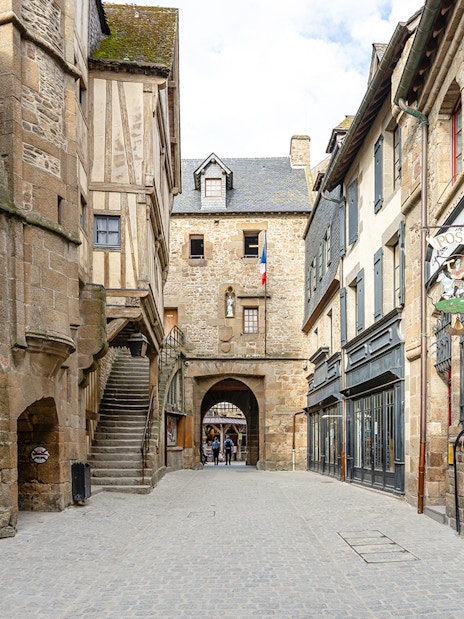80th Anniversary of D-Day and the Battle of Normandy
Headout is an authorized and trusted partner of the venue, offering curated experiences to enjoy this attraction. This is not the venue's website.

From Paris: WWII D-Day Normandy Landing Beaches Full-Day Guided Tour with Optional Lunch
Itinerary
START POINT
Central Paris
The day begins with an early departure from Paris for the 3-hour drive to Normandy. The route takes you through the scenic countryside, while your guide provides historical background on Operation Overlord, explaining the strategic importance of each site en route.
290 km
3 hours
1
Omaha Beach
Free Admission
The most brutal landing site on D-Day, walking along the beach you will see the Les Braves memorial, preserved German bunkers, and key points where soldiers landed under heavy fire as your guide recounts personal accounts of the battle.
4.5 km
7 minutes
2
Overlord Museum
Tickets included (based on selection)
A short drive away, the Overlord Museum houses an extensive collection of military vehicles, weapons and personal artifacts from both Allied and German forces like letters, uniforms and photographs, humanizing the stories of the soldiers who fought here.
1.3 km
3 minutes
3
Normandy American Cemetery
Tickets included
Overlooking Omaha Beach, at the American Military Cemetery at Colleville-sur-Mer you will be lead through the symmetrical rows of white crosses and Stars of David, and told the stories of some of the nearly 10,000 soldiers buried here.
0.2 km
3 minutes
4
Garden of the Missing
Free Admission
Within the cemetery grounds, the Memorial, Chapel, and Garden of the Missing honor those whose bodies were never recovered. Your guide will explain the significance of the Wall of the Missing, engraved with the names of over 1,500 soldiers lost in battle.
25.4 km
34 minutes
5
Arromanches & Remains of Mulberry Harbor
Free Admission
At Arromanches, your guide will take you to a viewpoint overlooking the remains of Mulberry Harbor, an artificial port that played a crucial role in sustaining the invasion. You’ll learn how these massive floating structures were constructed and how they allowed the Allies to bring in essential supplies after securing the beaches.
13.7 km
19 minutes
6
Juno Beach
Free Admission
Juno Beach was the primary landing site for Canadian forces on D-Day. Here, your guide will explain the unique challenges faced by the Canadian troops and how they overcame them to secure the beach. Along the shore, you’ll see the remaining German bunkers and defensive structures.
1.4 km
4 minutes
7
Juno Beach Centre
Tickets included
The Juno Beach Centre is the only museum in Normandy dedicated to Canada’s role in World War II. Your guide will walk you through exhibits that highlight Canada’s military contributions, as well as the personal stories of soldiers and civilians affected by the war.
254 km
3 hours
8
END POINT
Central Paris
Guided tour of US D-Day landing beaches with round-trip transfers from Paris, expert WWII commentary, and optional lunch or small-group upgrades.
- Enjoy seamless travel with round-trip transfers from Paris in a comfortable air-conditioned vehicle.
- Visit key US D-Day battle sites, including Utah Beach, Omaha Beach, Pointe du Hoc, Arromanches, and the Normandy American Cemetery.
- Gain insights from an expert WWII guide who brings history to life with powerful stories of the Normandy invasion.
- Choose between a small-group experience (8 guests max) or a standard group tour (max 25 guests). The small group experience also includes exclusive entry to the Overlord Museum.
- Upgrade your tour to include a two-course traditional lunch with local cider at a seaside restaurant.
Guided tour of US D-Day landing beaches with round-trip transfers from Paris, expert WWII commentary, and optional lunch or small-group upgrades.
- Enjoy seamless travel with round-trip transfers from Paris in a comfortable air-conditioned vehicle.
- Visit key US D-Day battle sites, including Utah Beach, Omaha Beach, Pointe du Hoc, Arromanches, and the Normandy American Cemetery.
- Gain insights from an expert WWII guide who brings history to life with powerful stories of the Normandy invasion.
- Choose between a small-group experience (8 guests max) or a standard group tour (max 25 guests). The small group experience also includes exclusive entry to the Overlord Museum.
- Upgrade your tour to include a two-course traditional lunch with local cider at a seaside restaurant.
Inclusions
- Full-day guided tour of Normandy & D-Day beaches
- English-speaking tour guide
- Round-trip transfers from Paris in an AC vehicle
- Entry to all landmarks included in itinerary
- Group size of 8 or 25 people (as per option selected)
- Entry to Overlord Museum (as per option selected)
- 2-course lunch with glass of cider (as per option selected)
- This experience is not accessible by wheelchair and pram/strollers.
- You can cancel these tickets up to 24 hours before the experience begins and get a full refund.
From Paris: WWII D-Day Normandy USA Landing Beaches Semi-Private Guided Full-Day Tour with Optional Lunch
- Meet your tour guide-driver and get started on your journey back to June 6, 1944, when the Normandy landings took place, on a small group tour.
- Your first stop is La Pointe du Hoc, where US Rangers landed and captured the strongly fortified German promontory. Hear all about the events that unfolded here on D-Day from your expert guide.
- Next, continue your visit to Omaha Beach, where the most difficult and impressive attack happened because, in a matter of hours, almost 2,500 men lost their lives on this beach.
- Stop at Colleville sur Mer American Cemetery which has over 9,000 perfectly-aligned white crosses, dedicated to the American troops who lost their lives in Europe in the course of World War II.
- The day ends with a visit to Juno Beach, where you’ll see the famous “Canada House” said to be the first house liberated by the Allied Troops on D-Day.
- Meet your tour guide-driver and get started on your journey back to June 6, 1944, when the Normandy landings took place, on a small group tour.
- Your first stop is La Pointe du Hoc, where US Rangers landed and captured the strongly fortified German promontory. Hear all about the events that unfolded here on D-Day from your expert guide.
- Next, continue your visit to Omaha Beach, where the most difficult and impressive attack happened because, in a matter of hours, almost 2,500 men lost their lives on this beach.
- Stop at Colleville sur Mer American Cemetery which has over 9,000 perfectly-aligned white crosses, dedicated to the American troops who lost their lives in Europe in the course of World War II.
- The day ends with a visit to Juno Beach, where you’ll see the famous “Canada House” said to be the first house liberated by the Allied Troops on D-Day.
Inclusions
- Full-day tour of Normandy D-Day Battlefields & Landing Beaches
- Expert English-speaking guide
- Small group tour of 15 guests
- Guided visit of Pointe du Hoc
- Guided visit to Omaha Beach & Juno Beach
- Free time at Colleville sur Mer American Cemetery
- Round-trip transfers in AC vehicle
- Lunch (optional)
- Tip: Pack a pair of comfortable walking shoes. You'll be exploring beaches, bunkers, and museums on foot.
- This experience is not accessible by wheelchairs.
- These tickets can't be cancelled or rescheduled.
Itinerary
START POINT
Central Paris
As you travel toward the Somme region, your guide will provide historical context, detailing the significance of the Western Front and how the Battle of the Somme shaped the course of World War I.
136 km
2 hours
1
Villers-Bretonneux
Tickets included
The memorial honors 10,738 Australian soldiers who died on the Western Front with no known grave. Each year, this site hosts Anzac Day ceremonies, commemorating the bravery and sacrifice of Australian troops.
26.4 km
28 minutes
2
Lochnagar Mine Crater
Free Admission
The mine was created by a massive explosion on July 1, 1916—the first day of the Battle of the Somme. This enormous crater, 30 meters deep and 100 meters wide, was formed when British forces detonated explosives beneath German defensive positions.
4.5 km
6 minutes
3
Pozières
Free Admission
Pozières was a key battleground during the Somme offensive, particularly for Australian and British forces. The village church, with its delicate Gothic arched ceiling, serves as a stark contrast to the destruction that once engulfed this area.
3.6 km
5 minutes
4
Thiepval Memorial
Tickets included
The Thiepval Memorial to the Missing is the largest Commonwealth war memorial in the world, listing the names of more than 72,000 British and South African soldiers who died in the Somme and have no known grave.
4.7 km
6 minutes
5
Newfoundland Memorial
Tickets included
This memorial is the largest preserved battlefield of the Somme, where the landscape remains scarred by the trenches, shell craters, and barbed wire of 1916. Your guide will take you along the original trench lines, explaining how the Newfoundland Regiment suffered devastating losses within minutes of going over the top.
164 km
2 hours
6
END POINT
Central Paris
Discover key WWI battlefields in Normandy on a small-group tour led by an expert historian.
- Travel from Paris in an air-conditioned minibus for a small-group tour (max 8 guests) of WWI battlefields.
- Walk in preserved trenches at Beaumont-Hamel and witness the impact of war firsthand.
- Visit historic sites including Villers-Bretonneux, Thiepval Memorial, and Pozières, where fierce battles took place
- Explore the Somme 1916 Museum, home to personal artifacts, weapons, and letters from soldiers of the Great War.
- Enjoy a lunch stop in Pozières (not included), a town at the heart of Australian WWI history.
Discover key WWI battlefields in Normandy on a small-group tour led by an expert historian.
- Travel from Paris in an air-conditioned minibus for a small-group tour (max 8 guests) of WWI battlefields.
- Walk in preserved trenches at Beaumont-Hamel and witness the impact of war firsthand.
- Visit historic sites including Villers-Bretonneux, Thiepval Memorial, and Pozières, where fierce battles took place
- Explore the Somme 1916 Museum, home to personal artifacts, weapons, and letters from soldiers of the Great War.
- Enjoy a lunch stop in Pozières (not included), a town at the heart of Australian WWI history.
Inclusions
- Full-day tour of Somme battlefields
- English-speaking guide
- Round-trip transport in an AC minibus
- Small group tour (8 individuals max)
- Entry to Somme Trench museum, Thiepval Memorial, Newfoundland Memorial and Villers-Bretonneux
Exclusions
Lunch
- Lunch is not included in the tour price. However, there will be a one-hour lunch stop at a highly-rated local restaurant in Poziere. Guests are also welcome to bring their own lunch if preferred.
- Restrooms are available at most stops, and a designated break will be made during the 2-hour drive.
- Due to uneven terrain at key sites, this tour is not wheelchair accessible.
- You can cancel these tickets up to 72 hours before the experience begins and get a full refund.
From Paris: WWII Canadian Battlefields & Landing Beaches Semi-Private Full-Day Guided Tour
Itinerary
START POINT
Central Paris
Your small-group journey begins near the Arc de Triomphe in Paris your guide provides historical background on Operation Overlord and the vital role played by Canadian forces in the Normandy landings during the two-hour drive through the scenic French countryside.
247 km
3 hours
1
Juno Beach
Free Admission
Upon arrival, you will step onto the sands of Juno Beach, where 14,000 Canadian troops landed under intense fire. Your guide will explain how the landings unfolded, the strategic importance of this sector, and the challenges Canadian forces faced as they pushed inland.
1.4 km
4 minutes
2
Juno Beach Centre
Tickets included
Next, you’ll visit the Juno Beach Centre, a museum detailing Canada’s role in the Normandy invasion through interactive exhibits and personal testimonies. Afterward, an official Juno Beach Centre guide will lead you inside two original German bunkers, normally closed to the public.
4.5 km
9 minutes
3
Canada House
Tickets included
A short walk from the landing site, you’ll visit Canada House, believed to be the first home liberated by Allied troops on D-Day. Your guide will share stories of the soldiers who fought here and explain how this house, still privately owned, became a symbol of the liberation.
5.2 km
6 minutes
4
Canadian War Cemetery
Free Admission
Here, more than 2,000 Canadian soldiers who lost their lives in the Battle of Normandy are laid to rest. You will get to know personal stories of some of these men, offering a moving tribute to their bravery and sacrifice. The peaceful setting of the cemetery provides a moment for reflection and remembrance.
10.7 km
11 minutes
5
Hell's Corner
After lunch, you’ll visit Hell’s Corner, the furthest inland point reached by Canadian forces on D-Day, located just 5 miles from Caen. Despite their success at the beach, Canadian troops encountered fierce German resistance as they pushed forward.
5.4 km
8 minutes
6
Ardenne Abbey
Your final stop is Ardenne Abbey, the site of one of the war’s darkest atrocities where 20 Canadian soldiers were taken prisoner and executed by the SS Hitler Youth Division in direct violation of the Geneva Convention.
233 km
3 hours
7
END POINT
Central Paris
Explore WWII Canadian battlefields on a semi-private tour with expert guide & exclusive bunker access.
- Travel from Paris in a luxury air-conditioned minibus for an immersive small-group (max 8 guests) tour of key WWII sites.
- Walk in the footsteps of Canadian troops at Juno Beach, where 14,000 soldiers stormed the shores on D-Day. Explore two restricted German bunkers, remnants of the Atlantic Wall’s last defenses.
- Honor Canada’s fallen at Bény-sur-Mer Cemetery and Ardenne Abbey, where prisoners of war were executed.
- Explore the Juno Beach Centre, reliving Canada’s D-Day story, and visit Canada House, the first home freed by Canadian troops—all with included entry.
Explore WWII Canadian battlefields on a semi-private tour with expert guide & exclusive bunker access.
- Travel from Paris in a luxury air-conditioned minibus for an immersive small-group (max 8 guests) tour of key WWII sites.
- Walk in the footsteps of Canadian troops at Juno Beach, where 14,000 soldiers stormed the shores on D-Day. Explore two restricted German bunkers, remnants of the Atlantic Wall’s last defenses.
- Honor Canada’s fallen at Bény-sur-Mer Cemetery and Ardenne Abbey, where prisoners of war were executed.
- Explore the Juno Beach Centre, reliving Canada’s D-Day story, and visit Canada House, the first home freed by Canadian troops—all with included entry.
Inclusions
- Full-day tour of Canadian D-Day sites in Normandy
- Entry to Juno Beach Center, German bunkers and Canadian Cemetery
- Round-trip transport from Paris in an air-conditioned minibus
- Expert English-speaking WWII guide
- Small-group experience (max 8 guests)
- This experience is restricted for guests under the age of 6 years.
- Lunch is not included in the tour price. However, there will be a one-hour lunch stop at a highly-rated local restaurant in Poziere. Guests are also welcome to bring their own lunch if preferred.
- Restrooms are available at most stops, and a designated break will be made during the 2-hour drive.
- Due to uneven terrain at key sites, this tour is not wheelchair accessible.
- You can cancel these tickets up to 24 hours before the experience begins and get a full refund.
Explore Mont Saint-Michel’s medieval streets with an expert guide before enjoying a self-guided Abbey visit.
- Travel from Paris in a comfortable air-conditioned coach, passing Normandy’s scenic countryside en route to the island.
- Explore Mont Saint-Michel’s medieval streets with an expert guide before enjoying free time on the island.
- Visit Mont Saint-Michel Abbey with a self-guided audio tour, discovering its gothic halls, towering spires, and centuries-old monastery.
- Savor Normandy’s specialties—cider, seafood, and crêpes—while soaking in panoramic bay views.
Explore Mont Saint-Michel’s medieval streets with an expert guide before enjoying a self-guided Abbey visit.
- Travel from Paris in a comfortable air-conditioned coach, passing Normandy’s scenic countryside en route to the island.
- Explore Mont Saint-Michel’s medieval streets with an expert guide before enjoying free time on the island.
- Visit Mont Saint-Michel Abbey with a self-guided audio tour, discovering its gothic halls, towering spires, and centuries-old monastery.
- Savor Normandy’s specialties—cider, seafood, and crêpes—while soaking in panoramic bay views.
Inclusions
- Full-day guided tour of Mont Saint-Michel
- Expert English-speaking guide
- Audio-guided visit to the Mont Saint-Michel Abbey
- Round-trip transfers via AC coach from Paris
Exclusions
Lunch
- Please note that admission is free during the following days: European Heritage Days on the third weekend of September and every first Sunday of the month from November to March.
- Keep in mind that carrier bags, knives, and scooters are not allowed on this experience.
- Folded strollers are allowed inside the monument.
- Guide dogs and assistance dogs are allowed inside the monument. However, other pets are not allowed.
- Please note the guided tour takes place only for the city. An audio guide app will be provided for you to explore the Abbey.
- The site is challenging for visitors with reduced mobility, but assistance devices and adapted tour options are available. However, despite these accommodations, some areas may still be difficult to access.
- You can cancel these tickets up to 72 hours before the experience begins and get a full refund.
Top things to do in Normandy
80th Normandy D-Day anniversary events

Fireworks Event
Date and Time: Saturday, 1 June 2024, at nightfall
Location: Over the 5 landing beaches
Normandy will host a major family-friendly firework display, lighting up the sky simultaneously over all five Landing Beaches. This event is free and open to everyone, providing an opportunity for those not attending official ceremonies to join in the commemoration.

Official International Ceremony
Date: Thursday, 6 June 2024
Location: Omaha Beach
This is an invitation-only event with heads of state, veterans, and officials gathering to mark the 80th anniversary of D-Day.
Security Notice for 6th June
For security, many beaches and areas will be restricted and closed to the public. Visitors and vehicles will not have access.

Additional Ceremonies
- 5 June: An international ceremony will honor civilian victims in Saint-Lô.
- 6 June: A Franco-American ceremony will be held in Colleville-sur-Mer, followed by the official ceremony.
- 6 June: A Franco-Canadian ceremony will take place in Courseulles-sur-Mer.
- 7 June: President Joe Biden will attend a ceremony in Cherbourg.
- 7 June: President Macron will participate in the Bayeux Liberation Ceremony.

D-Day Festival Normandy
Location: From Pegasus Bridge to Sainte-Mère-Église, including the entire coastline of D-Day and the Battle of Normandy.
The festival features over 100 events, including parades, concerts, historical re-enactments, fireworks, exhibitions, and more. Highlights include synchronized fireworks at major D-Day sites, a giant picnic on Omaha Beach, Liberation Balls, bagpipe parades, and international parachuting events above Sainte-Mère-Église.

Art Installation
Location: British Normandy Memorial in Ver-sur-Mer
An installation called "Standing with Giants" features 1,475 silhouettes, representing the British fatalities on 6 June 1944. This community project uses recycled materials for large-scale art installations, providing spaces for reflection. It will be available for visits throughout the summer.
Normandy D-Day beaches and sites

Omaha Beach
Perhaps the most renowned of the D-Day beaches, Omaha saw some of the heaviest fighting on June 6, 1944. Today, the beach stretches quietly along the coast, bordered by grassy bluffs. Walking this sandy stretch offers a visceral connection to the past.

Normandy American Cemetery
Located near Omaha Beach, and on the site of the former temporary battlefield cemetery of Saint Laurent, the solemn rows of white crosses at the Normandy American Cemetery commemorating 9,388 soldiers who gave their lives in World War II.

Pointe du Hoc
This promontory between Utah and Omaha beaches was a fortified German stronghold. The scars of battle are still visible in the form of bomb craters and ruined bunkers. Climbing the cliffs gives you a sense of the daunting challenge faced by the Rangers who had to scale them under a barrage of enemy fire.

Utah Beach
The westernmost of the landing sites, Utah Beach was taken by U.S. troops with fewer casualties than Omaha, but still faced tough resistance. The Utah Beach Museum recounts the planning and execution of the landings, and the airborne operations that played a crucial role in securing the beachhead.

Arromanches
At Gold Beach, where British forces landed, Arromanches hosts the remains of the Mulberry Harbour, an engineering marvel of the war. The artificial port allowed the rapid offloading of supplies necessary for the Allied push into France, and its remnants are still visible in the water today.

Pegasus Bridge
Captured by British airborne forces in the early hours of D-Day, this bridge was crucial in preventing German reinforcements from reaching the beaches. The Pegasus Bridge Museum not only tells the story of its capture but also displays the original bridge.

Juno Beach Centre
This site focuses on the Canadian forces, whose bravery and efforts were crucial in capturing Juno Beach against stiff resistance. The centre not only serves as a museum but also as a cultural facility for visitors to understand Canada's role in World War II.

Sainte-Mère-Église
Famous for its portrayal in the film "The Longest Day," this town was one of the first liberated during the D-Day operations. The Airborne Museum here is dedicated to the paratroopers who parachuted into Normandy as part of the invasion and features a replica of the church spire where paratrooper John Steele's parachute was caught.
Plan your visit to the D-Day 80th Anniversary Celebrations in Normandy
Normandy is well-connected to Paris, which makes it accessible for those traveling internationally:
By Car: Driving from Paris to Normandy offers flexibility and the freedom to explore small towns and countryside at your own pace. The journey takes about three hours via the A13 motorway.
By Train: Direct trains from Paris Saint-Lazare station to cities like Caen and Bayeux take around two hours. This is a convenient option if you prefer not to drive.
By Tour: For a hassle-free experience, consider booking a guided tour from Paris. These often include transportation, guided visits, and sometimes meals, allowing you to relax and soak in the information without the stress of planning.

In Normandy, accommodations range from charming bed and breakfasts in the countryside to upscale hotels in larger towns. For a truly memorable stay:
In Bayeux: Opt for a boutique hotel like Hotel Reine Mathilde or a historic inn like the Hotel d'Argouges within walking distance of the city center.
In the countryside: Stay at a restored château or a farmhouse for an authentic Norman experience.

Normandy is as much a feast for the palate as it is a journey through history. This region's culinary tradition is deeply intertwined with its agricultural richness, producing some of France's most iconic foods and beverages.
- Apple-based beverages - You can't visit Normandy without trying its famous apple ciders. Soft and sweet or crisp and dry, the ciders here are made using age-old methods. For something stronger, sip on Calvados, an apple brandy that is often enjoyed as a digestif. Visit a local distillery to learn about the production process and enjoy a tasting.
- Cheeses - The lush pastures of Normandy are ideal for dairy farming, making it a cheese lover's paradise. Camembert, perhaps the most famous of the region's cheeses, originates here. Pont-l'Évêque and Livarot are other must-try cheeses, each with their own unique flavor and history.
- Seafood - Given its extensive coastline, it's no surprise that Normandy excels in seafood. The oysters from Saint-Vaast-la-Hougue are highly prized, and mussels and scallops are staples on local menus. A traditional seafood platter, often served with a tangy mignonette sauce, is a perfect way to sample the variety on offer.
- Normandy butter and cream - Known for being particularly rich and flavorful, Normandy butter and cream are used lavishly in local cuisine. They form the base of many sauces and are a key ingredient in dishes like Moules à la Crème (mussels cooked in a creamy sauce) and Tarte Tatin (an upside-down apple tart that benefits greatly from the rich local butter).

If you find yourself with extra time in Normandy or you're looking to add more to your experience beyond the historical sites, there’s plenty more to see and do in this richly diverse region.
- Explore the Medieval City of Bayeux - Aside from its connection to D-Day, Bayeux is famous for the Bayeux Tapestry, an 11th-century embroidered cloth that chronicles the Norman conquest of England. The city itself offers charming streets lined with timber-framed houses, quaint shops, and inviting cafés. The Bayeux Cathedral, a stunning example of Norman architecture, is also worth a visit.
- Visit Mont Saint-Michel - While technically just outside the boundaries of Normandy, this iconic island commune and its awe-inspiring abbey are easily reachable and make for an unforgettable day trip. The dramatic tide changes and medieval architecture provide spectacular photo opportunities.
- Caen Memorial Museum - For a deeper understanding of World War II and the Battle of Normandy in particular, spend a day at the Caen Memorial Museum. The museum not only covers the D-Day landings but also provides a broader context of the entire war.
- Norman Countryside and Apple Orchards - Take a leisurely drive through the Norman countryside. Many apple orchards offer tours and tastings, which can provide a delightful insight into the production of cider and Calvados.
- Antique Markets and Local Crafts - Normandy is also known for its antique markets and boutiques, where you can find everything from vintage Normandy lace to antique furniture. Exploring these markets can be a delightful way to spend a morning or afternoon.

